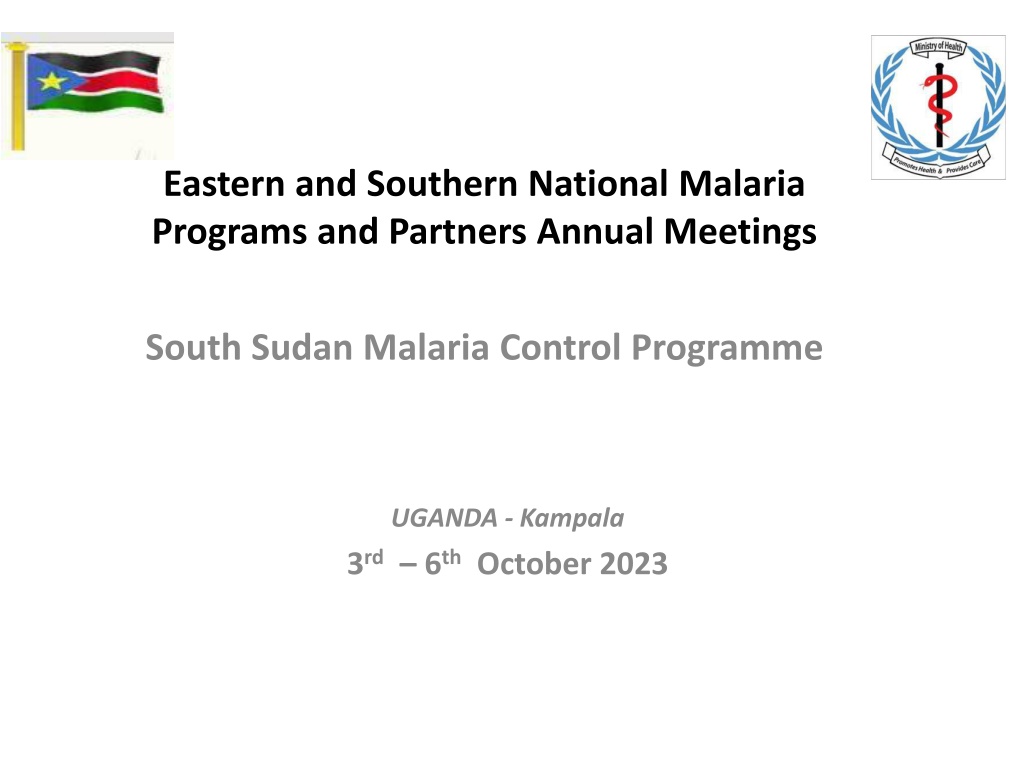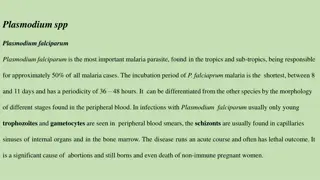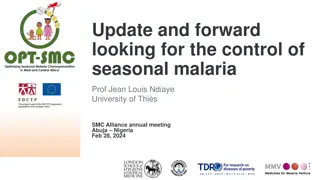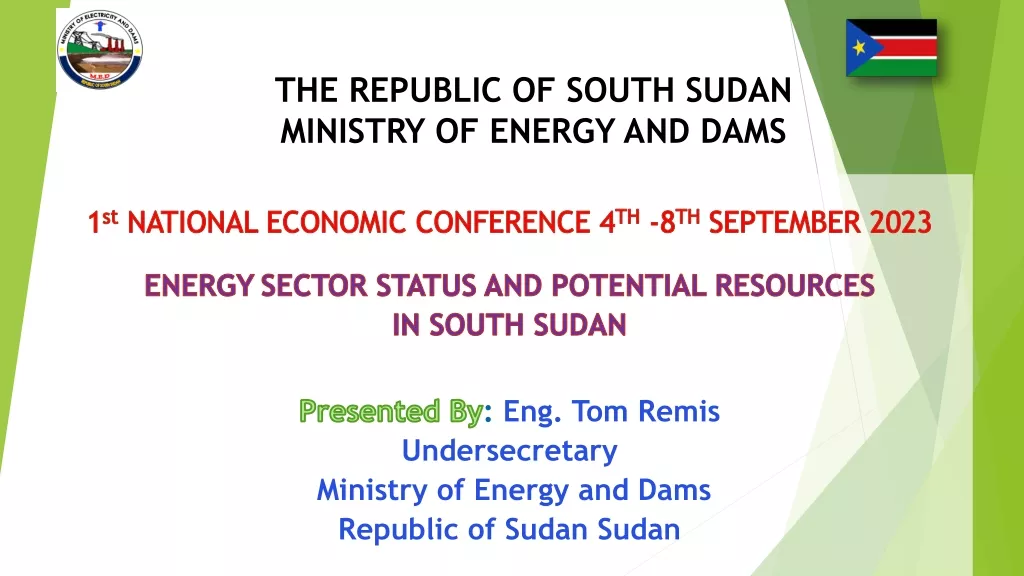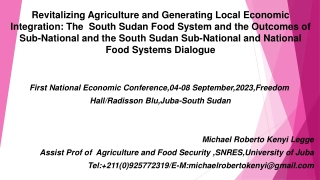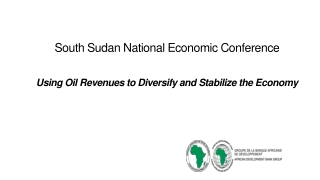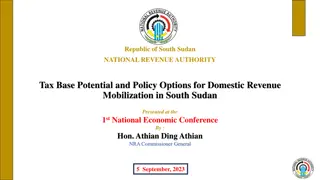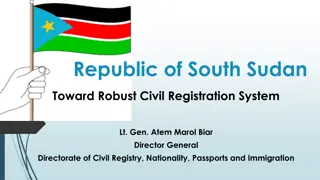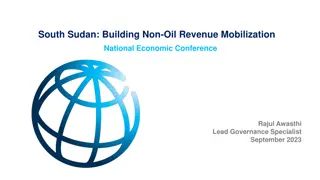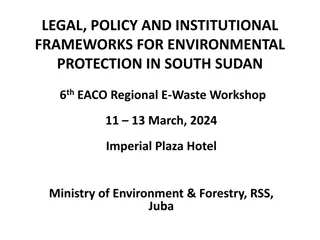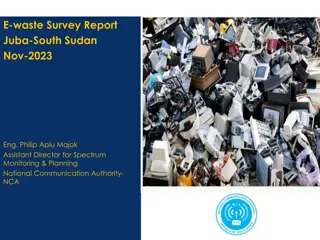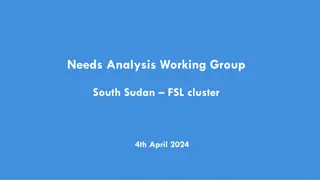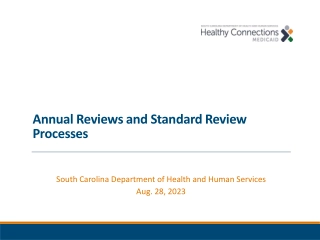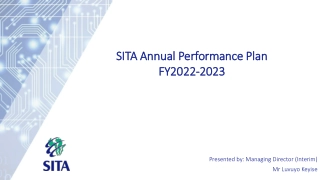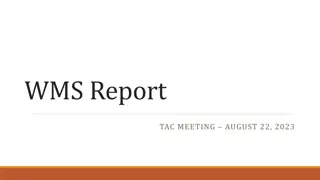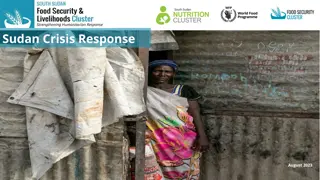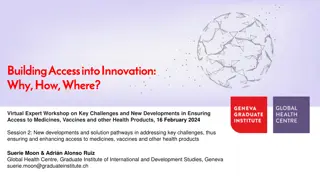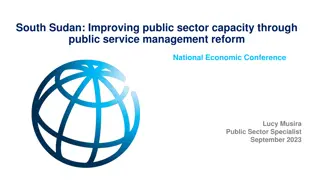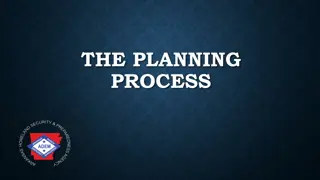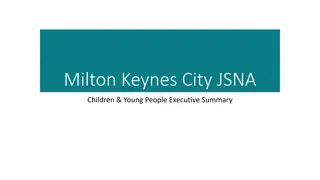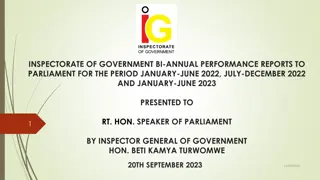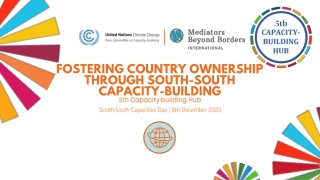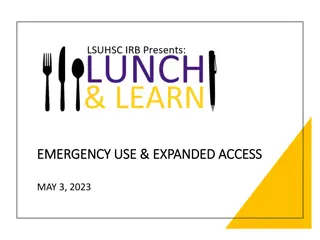Enhancing Malaria Services Access in South Sudan - Annual Meetings Summary
The Eastern and Southern National Malaria Programs, along with partners, conducted meetings in Uganda to address malaria service accessibility in South Sudan. The Malaria Matchbox initiative aimed to identify barriers and risk factors hindering equitable service provision, focusing on behavior, socio-cultural factors, information accessibility, and health literacy. Data collection involved various stakeholder interviews and group discussions, highlighting challenges such as attitudes, beliefs, and quality of health care services. The approach followed evidence-driven decision-making, multi-stakeholder engagement, gender-responsive, and rights-based principles.
Download Presentation
Please find below an Image/Link to download the presentation.
The content on the website is provided AS IS for your information and personal use only. It may not be sold, licensed, or shared on other websites without obtaining consent from the author. Download presentation by click this link. If you encounter any issues during the download, it is possible that the publisher has removed the file from their server.
Presentation Transcript
Eastern and Southern National Malaria Programs and Partners Annual Meetings South Sudan Malaria Control Programme UGANDA - Kampala 3rd 6th October 2023
Eastern and Southern National Malaria Programs and Partners Annual Meetings 3 3 - - 6 October 2023 6 October 2023 Kampala, Uganda Kampala, Uganda Malaria Match Box South Sudan
The malaria matchbox Goal: Improving Access to Malaria Services for under-served and vulnerable populations in South Sudan Aim: To identify a range of determinants including behaviour and sociocultural factors; information accessibility and health literacy; financial and geographical accessibility; quality, of service delivery issues and barriers to accessing services as well as the bottlenecks to provide equitable services of malaria prevention and control and other health services. Objective: The overall objective was to conduct an assessment using the Malaria Matchbox Toolkit to determine risk factors and barriers impeding equitable and integrated people-cantered malaria programs
Overall Principle Followed Evidence- driven decision making Multi- stakeholder engagement A gender responsive approach A rights- based approach Inclusivity People- centred Adapted to context of Republic of South Sudan Essential to match people s specific needs to malaria responses that are person centered, rights-based and gender responsive. 4 RBM Partnership To End Malaria
Data Collection Questionnaire Type # interviews #Participants #Female Participants KII-UNICEF, INGO & Donors 14 14 7 KII-MOH/GOVT 33 33 12 FGD CSO-NGOs 22 85 20 FGD PHC Health Workers 20 150 58 FGD Community 23 243 105 FGD Adolescent 26 265 127 Total 138 790 329 Data collection from all ten states and 3 administration areas
Behaviour and Socio Behaviour and Socio- -Cultural Cultural Behavior -Socio-cultural - challenges related to general knowledge, attitudes and practices amongst diverse vulnerable groups with regard to malaria. Quality health care services Trends in health seeking behaviour linked to traditional beliefs (what worked before can now M-See-M-Do Information accessibility and health literacy Negative attitudes and beliefs - making decision from un-informed point of view. Physical accessibility - negative experiences with health facilities Bahaviours of health workers; distances, facilities (ramps for PWDs, elderly) Financial accessibility affordability - the influence of gender norms and responsibilities in communities poverty W/Gs/children/the elderly
Quality Health Care Services Quality Health Care Services Ineffective distribution schemes of pharmaceutical and medical supplies to the states The push system not based on demand rather supply not based on needs of facilities/area compromises the quality of services - Lack of tailored strategies or targeted outreach to combat malaria among mobile populations. Current strategies/guidelines tailored for some P/W; L/mothers, children under 5
Quality Health Care Services Contd Quality Health Care Services Cont d Inadequacy at Health facilities Almost all health facilities (rural set up) are not functional equipment, drugs Operating hours of health facilities - long waiting times /delays Professionalism of personnel at the facilities - poor attitude of HCW towards patients discrimination were raised. issues of Language barrier so many dialects worse for IDPs, refugees, (No sign language) Limited range of malaria prevention and control commodities - LLINs
Information accessibility and health literacy Information accessibility and health literacy Inadequate health education on seeking malaria treatment early Malaria SBCC strategies and messages are designed for the general population. Health education does not address or soundout beliefs, myths, practices in relation to malaria prevention and treatment user friendliness of materials Language misunderstanding and/or misinterpretation of malaria messages to the population and linguistic obstacles potentially leading to No consideration for special needs person visual or hearing impairment.
Physical accessibility Physical accessibility Limited physical health facilities infrastructure Most in poor structural state, few which are functional, lack medical equipment, water and power supplies No resources for renovation of existing facilities/or building of new infrastructure Distances to health facilities; impassable roads The donor community increased support to humanitarian, for now finance only makeshifts structures cannot accommodate big numbers of populations GoSS (MoH) has limited capital expenditure budget to finance the development of new facilities Practically few facilities with user-friendly access to the premises
Financial Accessibility Financial Accessibility Affordability by populations Linked to poverty; Lack of transport Cost-sharing in some facilities Resources at Facilities inadequate resources - staff Vs population needs
National Malaria Control Programme National Malaria Control Programme NMCP s coordination and management Lack of NMCP linkage and oversight of malaria services provision in the private health sector. In relation to the informal cost sharing with no guidelines. Financial constraints to fund national and state level coordination. Limited NMCP presence at states and county levels. Inadequate coordination at county level.( No focal persons) Lack of TWG for malaria at state and county level to discuss and coordinate malaria issues monthly.
Ministry of Health Ministry of Health Knowledge Management Strategy Limited capacity of key technical CCM personnel to handle coordination effectively and efficiently, Leads to duplication of service delivery , and resources No specific information on partners i.e. geographic and specific projects on malaria activities. Low incentives for the CCM personnel to facilitate their work, merge salaries- not paid on time. Enhancing service delivery in humanitarian setting by utilizing relational capital No clear collaborations with different sectors partners complementarity, cooperation, coordination across development and humanitarian community to improve collective and efficient deliver of sustainable quality services
General Recommendations 1. Incremental scaling up thematic components and geographical coverage of Boma Health Initiative : Strengthening health capacities at the Payam level (PHCC) to provide supervisory and supportive roles to BHI for sustainable quality service delivery in Boma level. Build capacity of existing CNGs - acceptance behaviours by the populations 2. MP should strengthen, embed and implement people centred malaria prevention and control services across the country. This would build community ownership and acceptability of the programme by communities. 3. MP to strengthen integration of its activities with other programs, outside the health sector i.e livelihood, agriculture etc - diverse people at risk will be reached.
General Recommendations 4. Adapt SBCC interventions to address harmful beliefs and practices 5. Address misinformation and misconceptions; - simplified comprehensive information; to communities, C/B for BHI CHW as well. 6. Include other health providers as partners in SBCC for social norms transformation holistic understanding of Malaria SBCC interventions 7. Deliberate innovative male engagement strategies to harness M/Bs as partners in promoting malaria seeking behaviors including treatment 8. Sustainable effective community mobilization gender responsive, inclusivity to transformational community ownership and acceptability of M- programme by the communities.
Population recommendations on provision of quality Services Increase on the coverage the LLINs for effective malaria prevention inclusively amongst those considered to be underserved and their vulnerabilities, - the mobile populations and those in hard-to-reach places 1. BHI is good however, there is need for functional healthfacilities user-professional health workers, signlanguage not heard off 2. 3. BHI to ensure has CHWs based in own communities, there is need to have specific CHWs for underserved populations IDPs/refugees; use local sign language for PWDs
Population recommendations on Info accessibility & Health Literacy 1. Promote positive norms, beliefs, attitudes, and practices for voluntary malaria preventive uptake, - through community dialogues - Use of people centered approach - key influencers in communities 2. In-depth understanding of society dynamics - explore and maintain positive/alternative norms, particularly around misconceptions on prevention and treatment of malaria. 1. Unpack respected community values, gender and social norms that negatively impact on malaria programme across targeted audiences. allows the individuals to discuss the negative social norms, impact and effects; co-create feasible and practical solutions for malaria treatment uptake within their households and communities.
Financial Accessibility 1. MOH to re-examine the cost-sharing of malaria services 2. Affordability and cost implication across diverse segments of the population
Gender Responsive Monitoring and Accountability 1. Improve the gender and social inclusiveness current monitoring systems to capture and assess progress of reduced equity barriers . and simplify 2. Improve availability of gender and social disaggregated data on malaria prevention and control efforts across the country. inclusive
National Malaria Country Programme 1. Design and implement effectively drug supply management system that ensures adequate supply with minimal stock outs. Mix of pull vis-a-viz the push system of anti-malarial drugs to the states and counties. 2. NMCP should be supported to review strategies, policies and guidelines for effective, social inclusiveness 3. Strengthen efforts to integrate MP & control efforts across the multi-sectoral humanitarian response across the country. 4. Strengthen NMCP managerial and technical capacity at all levels sustainable retention of staff, continued C/B
Ministry of Health 1. Government to consider committing incremental raising of the health sector budget from 4% to at least 8% over the coming years. 2. Improve on MOH s coordination and management, by establishing a fully-fledged holistic project management unit (PMU) within the Ministry for effective and efficient health service delivery 3. Improve and implement MOH recruitment and retention policy to reduce the staff turnover special needs skills to be considered
Planned Activities Mass distribution of LLINs on going to ensure universal coverage Mobilisation of resources to enable continuous distribution and universal coverage for 2026 Collaboration with the humanitarian sector to leverage on available resources for malaria prevention and control for refugees, IDPs ,( Sudan Crisis response ongoing with GFATM support. Planning on expansion of an integrated SBCC strategy for roll out at facility and community level through GC7 funding to improve access to information
Expansion of BHI through GC7 funding to improve access to diagnosis and treatment Improvement in recording and reporting for better stratification for decision making Planned dissemination of results at the coming annual and review planning for all states and administrative areas.
Thanks Shukran
